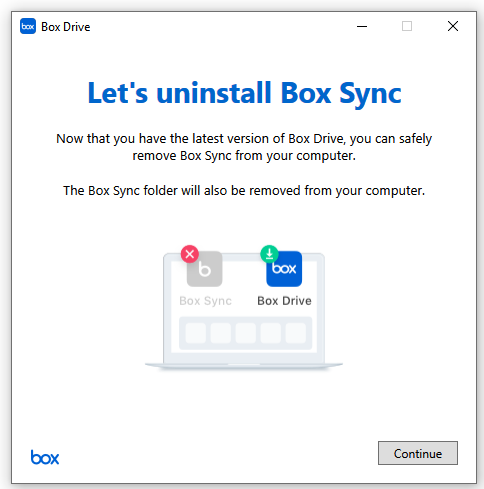

Unfortunately, the Finder Extension hangs around and even sometimes can prevent you from trashing it. Similarly, when you attempt to uninstall Box Sync, you’d think you could just quit it and throw the application in the trash. As you might imagine, that’s really annoying to do during every new employee setup. Unfortunately, this means if I am setting up someone’s computer for them and I want to introduce them to Box Sync, I have to logout and log back in so Box Sync can load the Finder Extension. It loads on every other subsequent launch… just not on the initial one. What it doesn’t do on its initial launch is enable its Finder Extension, and show all of the badges and menus.
BOX SYNC OSX INSTALL
When I install Box Sync for the first time and sign in, it connects to the cloud and displays my files in the Finder, as it should. You can find a list of the Finder Extensions installed on your Mac in System Preferences > Extensions.Ī common problem for administrators like me, however, is that these extensions may not always play nice when trying to automate a task. For example, the institution I work at utilizes Box Sync for file syncing. These extensions provide all sorts of additional functionality, from displaying badge icons to reflecting a file or folder’s sync status, adding a contextual menu, etc. macOS provides the developers of these applications with the ability to utilize a Finder Extension, or as Apple calls them in their dev note, Finder Sync Extensions.
Typically, these applications sync files from a cloud server down to the local machine and vice-versa. There are a number of applications for macOS that utilize a Finder Extension. I stumbled upon this about a month ago as I was trying to automate something, so this may be relevant information to some.


 0 kommentar(er)
0 kommentar(er)
